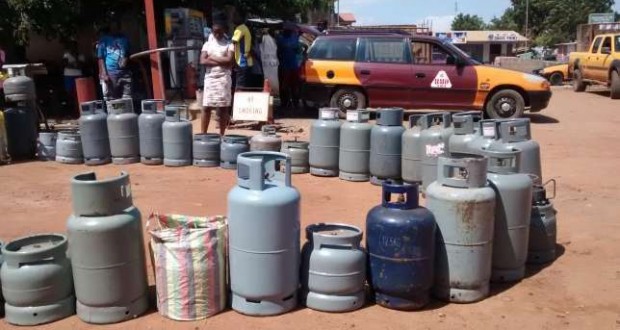The Liquefied Petroleum Gas (LPG) consumption witnessed a steady decline in 2022 in the Republic of Ghana, energynewsafrica.com can report.
Data sourced from the National Petroleum Authority (NPA) shows that the consumption of LPG, which is mostly used for cooking and powering of vehicles by some drivers, declined in 2022.
According to the data, LPG consumption in 2021 was 345, 477,075 kilogrammes while in 2022, consumption was 305,076,209 kilogrammes
This means that LPG consumption declined by a whopping 40,401,866 kilogrammes.
In 2021, Greater Accra recorded the highest LPG consumption with a figure of 112, 879,836 kilogrammes followed by Ashanti Region with 57,000,038 kilos.
Volta Region recorded 38,862,922 kilos, Brong Ahafo recorded 33,656,852 kilos, Eastern Region recorded 31,882,399 kilos, Central Region recorded 25,928,730 kilos, Western Region recorded 24,750,725 kilos, Upper East recorded 9,065,610 kilos, Northern Region recorded 7,819,850 kilos and Upper West recorded 3,631,113.
In 2022, Greater Accra recorded the highest LPG consumption with a figure of 106, 385,904 kilogrammes followed by Ashanti Region with 44,800,979 kilos.
Volta Region recorded 35,029,509kilos, Eastern Region recorded 29,204,594 kilos, Brong Ahafo recorded 26,669,366 kilos, Central Region recorded 22,904,346 kilos, Western Region recorded 21,277,310 kilos, Northern Region recorded 8,114,437 kilos, Northern Region recorded 7,819,850 kilos, Upper East recorded 7,315,393 kilos and Upper West recorded 3,374,371.
The fall in LPG consumption could be attributed to the high cost of the domestic commodity.
In 2022, LPG prices shot up astronomically with 14.5 kilos cylinder filled at almost GH¢300.
This forced many consumers to resort to alternatives such as charcoal and firewood.
In December 2022, the Chief Executive Officer of NPA, Dr Mustapha Abdul-Hamid, recognising the need for LPG to be made affordable, at an ‘LPG Safety and Awareness’, launch promised to make a case for Cabinet to remove some of the taxes on the product.
Source: https://energynewsafrica.com
















